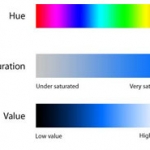7 Things Your Web Designer Needs to Understand About Your Business
 “I’ve already had two web designers try to put together our website,” the client confessed to me. “They both failed. Their designs were attractive, but they just couldn’t seem to connect with the realities of our business.”
“I’ve already had two web designers try to put together our website,” the client confessed to me. “They both failed. Their designs were attractive, but they just couldn’t seem to connect with the realities of our business.”
Unfortunately, this story is all too common. Many web designers are trained in graphic design, but know next to nothing about business. Their designs can be excellent, even brilliant. Their use of color, white space, typography, and balance can be masterful, but when it comes to things like marketing, sales, or branding, you get a blank look.
Too many businesses consider that a web designer is someone who just puts together a good-looking visual design. They are someone who “makes the website look good,” using whatever photographs, ad copy and logos are available. If they can throw in some “cutting edge” Flash graphics, so much the better.
But a competent graphic designer needs to be much more than this. He or she needs to have the intelligence to grasp complex business concepts and the skill to translate those concepts into a website that forwards the company’s goals.
Your website designer has to be willing to spend the time and effort to understand at least 7 things about your company:
 1. Your Goals: The most important thing for your web designer to know is your business goals. What are you trying to achieve? Are you trying to generate a high volume of leads for your sales force to follow up on? Are you going for direct sales? Are you trying to drive customers into your retail outlets? Every business has its own unique goals, and sometimes the goals are not obvious. If your designer really understands your goals, they will structure the website to achieve that. The goals drive everything.
1. Your Goals: The most important thing for your web designer to know is your business goals. What are you trying to achieve? Are you trying to generate a high volume of leads for your sales force to follow up on? Are you going for direct sales? Are you trying to drive customers into your retail outlets? Every business has its own unique goals, and sometimes the goals are not obvious. If your designer really understands your goals, they will structure the website to achieve that. The goals drive everything.
2. Your Products: What are you selling? Is it a physical product, a service, or a combination of both? Does your designer understand your product? Has he or she experienced it? Do they know how it is made, what goes into it, what benefits it provides for the user? What are customers saying about your product? Why do they prefer it over other similar products? What do customers like about your product? What arguments have sales people found most effective?
3. Your Customers: If your web designer does not understand exactly who they are designing for, they can make costly mistakes. They could design a site for end users, for instance, when you really intend for the site to be used by your sales and distribution network. Some designers may want to make your site look “young and edgy” (because that’s the type of design they personally like), when your target audience is older and more conservative. (or vice-versa) The more time your designer spends really understanding who you are trying to reach, the better.
4. Your Competition: Does your website look exactly like every other website in your business? That might be because your web designer never researched out your competition. What do your competitors’ websites look like? What are their strengths? Their weaknesses? What strategies are they using? Who are they trying to appeal to? Getting noticed in any industry means having a site that stands above competing sites.
5. Your Unique Value Proposition: What makes your service or product better than your competitors? It’s important to work this out for your business, and then make sure that your web designer understands it. A good web design will effectively communicate, both visually and with words, what makes your product special and why people should choose it over competing products.
6. Your Brand: What is the personality of your company? Does your promotion already have a distinctive look and feel? Do you already have a distinctive logo or type face? Do you already use certain colors that have become associated with your company. It takes a long time to build up brand equity, yet an uninformed designer can squander it if they are not aware of your current branding.
7. Your Conversion Strategy: You have a unique sales conversion strategy that you have developed over time. You know what is most effective. We worked with one software company that concentrated on getting people to download a free trial of their software. Why? Because they were converting 90% of these free trials to sales. That’s important information. It dictates the placement of the most prominent call to action on your home page.
If a website designer does not understand at least these 7 things about your company, they won’t have a clue as to how to design an effective website for you. It might look nice, but it will get you no business. In today’s business environment, having an effective website that addresses these 7 factors is far more important than a state-of-the-art site that wins design awards.
And watch out for these cheap “we can design your website for $300” offers. How can they build such an inexpensive site? Because they don’t take the time or effort to familiarize themselves with any of the above seven factors.
What have been your experiences with website designers? We’d like to hear!







